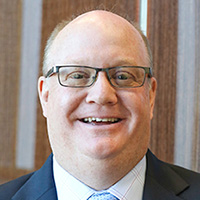How did you start off this semester? Was it a reset, relaunch, reboot, or redux from the fall? Whatever structures were in place during the first semester as our schools offered in-person learning on campus at reduced capacity, remote or distance learning, or a hybrid of those approaches, we already know more than we did before about how to engage students and families, how to support staff, how to work toward the social-emotional needs of all stakeholders, and even how to practice self-care as leaders on our campuses. So what are we doing to capture the lessons we’ve learned, make any needed adjustments, keep our focus centered on student needs and move ahead during the spring of 2021?
In School Leadership That Works (2005), Robert Marzano describes 21 different responsibilities of school leadership, using meta-analysis to correlate those responsibilities with student achievement. Three of the responsibilities with the greatest potential impact include Situational Awareness (.33), Flexibility (.28), and Relationships (.18). Here’s how I am thinking about applying these responsibilities to be a more adaptive, aware, and flexible school leader.
Situational Awareness and Flexibility
Marzano defines situational awareness as being “aware of the details and undercurrents in the running of the school” while using “this information to address current and potential problems.” Flexibility is defined as when a leader “adapts his or her leadership behavior to the needs of the current situation and is comfortable with dissent.”
So how are you becoming aware of the undercurrents, adapting to needs and showing comfort with dissent? Do you have listening mechanisms in place to capture sentiments and ideas? Do you have a sounding board or a leadership group that provides insight or shares information? If you have these structures in place, are they present for all stakeholders or just from your faculty or even a subset of faculty? Are you hearing from both certified and noncertified or instructional and noninstructional staff?
Seeking Authentic Insight
I like to send out a short survey on a routine basis. Sometimes it’s a check on the effectiveness of a collaboration meeting or asking for input for upcoming professional development needs or even feedback on my own performance in interactions with staff. It’s quick and easy to see the information, but I always try to share the results of the survey. Low survey responses can indicate levels of mistrust or feelings that findings won’t be used for improvements, so if you use surveys, you need to be willing to share the findings—both good and bad—as well as any insights you gained from what is expressed. I also try to set the surveys up for anonymity and I’ve had some very pointed criticism come my way, but at least I’ve asked and I bring to the surface what most likely is already discussed—whether I’m aware of it or not.
Besides gathering input from surveys, I attempt to have multiple conversations or check-ins. It can be as simple as a text or email asking how things are going, but it has to be authentic and not a generic pleasantry. I also endeavor to make several classroom visits, drop by the lunch area, and check in during planning periods just to be visible and present. We long for authenticity and transparency and, in those moments, I try to also be genuine about any concerns I have as well. I try to model “real talk” with colleagues. It isn’t always heavy, but it should always be honest. If someone is frustrated or upset with a practice, I have to turn off my “persuading brain” and turn on my “listening ears.” I try to practice the Stephen Covey principle of “seek first to understand, then to be understood,” and I don’t have to rationalize my actions at that moment. For me, I have to take the feedback and let it roll around a bit in my head to sort through it all and watch for common themes.
Being Present With Students
I also try to be present with students. Sometimes we’re surrounded by them but aren’t truly with them. In the dining hall, at a concert or sporting event, or out in the community, I want to be approachable. As I walk across campus, I try to greet each student I can just to say something as simple as “good morning,” “have a good day,” or “your concert last night was great.”

We all want to be seen and noticed, and students are no different. I have to remind myself of this when I’m walking to a meeting and thinking about the agenda or I’m preoccupied with an earlier challenge. If I walk by a student without acknowledging them, they don’t know what’s going on in my head. They just know a staff member passed by without saying anything.
If you open yourself up to intentional, purposeful interactions with students, they will be great providers of insight into your school. They know which staff members truly demonstrate care and concern for them on a regular basis. They know what is and what isn’t working with remote learning. They can be very blunt in their assessments, but they are the reason we are there, so we have to capture their insights. Again, you can use surveys, step into classrooms and ask their opinions or just ask a group sitting in a common area or waiting for a bus.
The Importance of Relationships
Marzano’s meta-analysis listed relationships last with an effect size of .18 on student achievement, but he defines it as “[demonstrating] an awareness of the personal aspects of teachers and staff.” In my practice, building and maintaining relationships is the “tool” I continually pick up to practice responsibilities like situational awareness, flexibility, affirmation, or communication. Although the research may not indicate as strong an effect on student achievement, to me it is central in being able to do our jobs effectively.
I try to be intentional in seeing each stakeholder, whether a staff member, student, parent, or community member, as an individual with aspirations and anxieties, hopes and fears, and all sorts of emotions in between as we work through this second semester. Let’s lean on those in our building to give us good feedback and insight, as well as those educational leaders we are networking with in our state and around the country who are giving their best for the students in their schools this spring.
Our students and communities have great needs, but together, as educational leaders, we have a wealth of compassion, resources, and insight to meet these challenges head-on. Thanks for taking on that job for kids!

